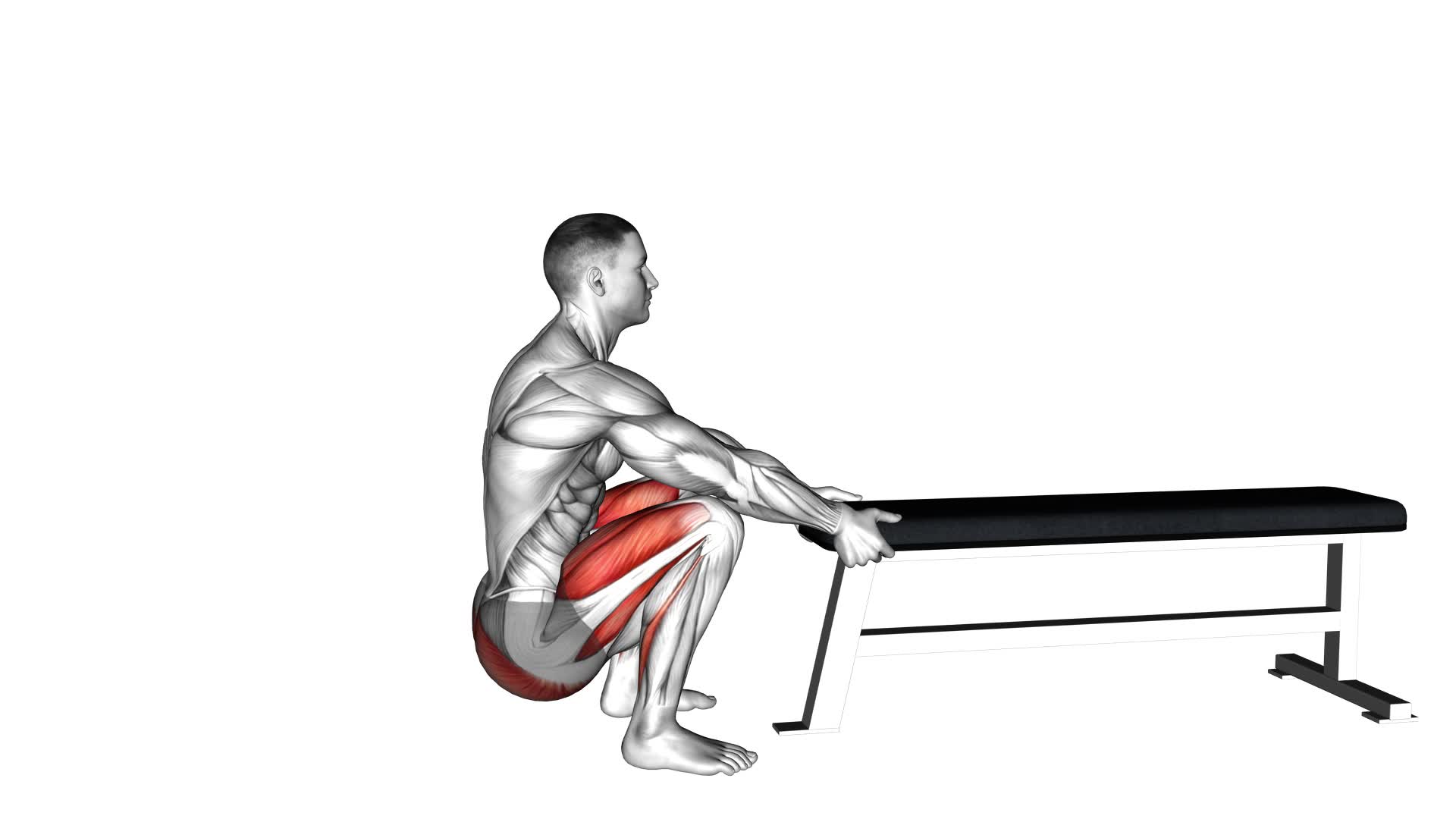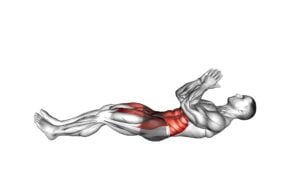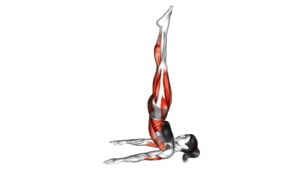Jackknife (Donkey) Squat (male) – Video Exercise Guide & Tips

Get ready to take your squats to the next level with the jackknife squat!
Watch This Exercise Video
In this video exercise guide, we'll show you the proper form and technique for this challenging lower body move. You'll learn how to engage your muscles effectively and avoid common mistakes.
Whether you're a beginner or a seasoned gym-goer, we've got variations and progressions to suit your fitness level.
Maximize your results with our expert tips and get ready to feel the burn!
Key Takeaways
- Jackknife squats improve balance and engage core muscles.
- They strengthen abs, lower back, and glutes.
- Proper form and technique are essential to prevent injury and engage the correct muscles.
- Modifications and progressions can be made to suit different fitness levels and continually challenge oneself.
Benefits of Jackknife Squats
You will experience numerous benefits from incorporating jackknife squats into your workout routine.
These squats are an excellent exercise for improving balance and increasing core strength. By engaging your core muscles, jackknife squats help stabilize your body during the movement, which in turn improves your balance.
As you lower into the squat position, your core muscles work hard to maintain stability and control. This not only strengthens your core but also enhances your overall balance.
In addition to balance, jackknife squats are highly effective for targeting and strengthening your core muscles. The movement requires you to engage your abs, lower back, and glutes, which helps develop a strong and stable core. A strong core is essential for performing various exercises and movements, as it provides stability and support to your entire body.
Now that you understand the benefits of jackknife squats in terms of improving balance and increasing core strength, let's move on to the next section, where we'll explore proper form and technique.
Proper Form and Technique
Continuing from the previous subtopic, it's important to focus on maintaining proper form and technique while performing jackknife squats. This is crucial for injury prevention and to ensure that you maximize the benefits of this exercise.
To begin, stand with your feet shoulder-width apart and your toes pointing slightly outward. As you lower into the squat, keep your back straight and your chest lifted. Make sure your knees track over your toes and don't collapse inward. Engage your core muscles to stabilize your body throughout the movement.
As you come up from the squat, squeeze your glutes and push through your heels to activate your posterior chain. This will help you maintain balance and control.
To further challenge yourself and add variety to your workout routine, you can try advanced variations of the jackknife squat. One option is to hold a dumbbell or kettlebell in front of your chest while performing the exercise. This increases the resistance and adds an extra level of difficulty. Another option is to perform the squat on an unstable surface, such as a Bosu ball or a balance board. This requires even more stability and engages your core muscles even further.
Remember to always listen to your body and stop if you feel any pain or discomfort. By focusing on proper form and technique, you can safely reap the benefits of jackknife squats while minimizing the risk of injury.
Equipment Needed for Jackknife Squats
To properly perform jackknife squats and maximize their benefits, it's important to have the necessary equipment.
One essential piece of equipment for this exercise is a stability ball. Using a stability ball adds an extra challenge to the squat, as it requires you to engage your core muscles for balance and stability. This can help improve your overall core strength and stability, making the exercise more effective. Additionally, the stability ball can also provide support for your lower back, reducing the risk of injury during the exercise.
If you're a beginner or find it difficult to perform jackknife squats with a stability ball, there are modifications that you can make. One modification is to use a bench or a sturdy chair instead of a stability ball. This provides a stable surface to support your body while performing the squat.
Another modification is to reduce the range of motion by not squatting as deep. This can help you build strength and gradually progress to performing the full jackknife squat.
Common Mistakes to Avoid
To perform the jackknife squat correctly and avoid common mistakes, there are a few form correction tips you should keep in mind.
First, make sure to maintain proper alignment by keeping your knees in line with your toes and your back straight throughout the movement.
Additionally, be mindful of your range of motion to prevent unnecessary strain on your joints.
Form Correction Tips
To improve your form in the Jackknife (Donkey) Squat, focus on avoiding these common mistakes.
First, make sure you aren't rounding your back during the exercise. Maintaining a neutral spine is crucial to prevent injury and maximize the effectiveness of the movement.
Another mistake to avoid is letting your knees cave inward. This puts unnecessary stress on the knee joints and can lead to injury. Instead, focus on keeping your knees in line with your toes throughout the entire squat.
Additionally, be mindful of your depth. Going too low can strain your knees, while not going low enough limits the benefits of the exercise.
Now that you're aware of these form correction tips, let's move on to injury prevention techniques.
Injury Prevention Techniques
To prevent injuries and avoid common mistakes, focus on implementing injury prevention techniques in your Jackknife (Donkey) Squat.
One of the most important techniques is to perform proper warm up exercises before starting the squat. This helps to prepare your muscles and joints for the intense movement and reduces the risk of injury. Dynamic stretches, such as leg swings and hip circles, are great warm up exercises that target the muscles involved in the Jackknife Squat.
Additionally, it's crucial to maintain proper form throughout the exercise. Avoid rounding your back or letting your knees cave inwards, as this can put unnecessary strain on your spine and knees.
Remember to start with a weight that you can handle comfortably and gradually increase the intensity as you build strength and stability.
Variations and Progressions
Now that you've mastered the basic jackknife squat, it's time to take it up a notch with advanced squat variations and progressions.
One way to challenge yourself is by adding weight to your squat, either by holding dumbbells or using a barbell. This will increase the intensity and help you build even more strength in your lower body.
Keep pushing yourself and exploring different variations to continue progressing in your squat journey.
Advanced Squat Variations
Once you have mastered the basic squat, you can challenge yourself by incorporating advanced squat variations and progressions. These advanced squat techniques can help you take your lower body strength and stability to the next level.
One such variation is the jackknife squat. To perform this exercise, start by standing with your feet hip-width apart and your hands on your hips. Then, bend your knees and lower your body into a squat position while simultaneously lifting one leg straight out in front of you. This movement mimics the motion of a jackknife, hence the name.
This variation not only targets your quadriceps and glutes, but also engages your core and improves balance. Incorporating jackknife squat variations into your workout routine will add variety and intensity to your squatting routine.
Progressing With Added Weight
As you progress with your squat variations and aim to add weight, you can continue challenging your lower body strength and stability. One way to do this is by incorporating weighted jackknife squats into your routine.
To perform this exercise, hold a dumbbell or kettlebell close to your chest while executing the jackknife squat movement. By adding weight, you increase the resistance and intensity of the exercise, which can lead to further muscle development in your legs and glutes.
Start with a lighter weight and gradually increase the load as you become more comfortable and confident with the movement. Remember to maintain proper form and control throughout the exercise to prevent injury and maximize the benefits of the weighted jackknife squats.
Tips for Maximizing Your Jackknife Squat Results
To maximize your jackknife squat results, focus on maintaining proper form throughout the exercise. This will ensure that you engage the correct muscles and avoid injury. Here are some tips to help you get the most out of your jackknife squats:
- Keep your back straight: Maintain a neutral spine throughout the movement. Avoid rounding or arching your back, as this can put unnecessary strain on your spine.
- Engage your core: Activate your abdominal muscles by drawing your belly button towards your spine. This will help stabilize your body and improve your balance.
- Control your descent: Lower yourself down slowly and with control. Avoid dropping down quickly, as this can reduce the effectiveness of the exercise and increase the risk of injury.
- Focus on the glutes: Squeeze your glutes as you rise back up from the squat. This will maximize muscle activation in your buttocks and help you build a stronger posterior chain.
Incorporating jackknife squats into a full body workout routine can be highly beneficial. They target multiple muscle groups, including the quads, hamstrings, glutes, and core. By adding this exercise to your routine, you can improve lower body strength, increase muscle definition, and enhance overall athletic performance.
Remember to start with lighter weights and gradually increase the load as you become more comfortable with the exercise.
Frequently Asked Questions
How Many Calories Can You Burn by Doing Jackknife Squats?
You can burn a significant number of calories by doing jackknife squats. The exact number of calories burned will vary depending on factors such as your weight, intensity, and duration of the exercise.
Jackknife squats are a compound exercise that engages multiple muscle groups, making them an effective way to increase caloric expenditure.
Additionally, variations and modifications, such as adding weights or incorporating jumps, can further enhance the calorie-burning potential of jackknife squats.
Can Jackknife Squats Help Improve Flexibility?
Jackknife squats can indeed help improve flexibility. By incorporating jackknife squat variations into your workout routine, you can target different muscle groups and increase your range of motion. These squats engage your glutes, quads, and core, while also stretching your hip flexors and improving overall lower body flexibility.
Regularly performing jackknife squats can lead to increased mobility and better performance in activities that require flexibility, such as sports or dancing.
Are Jackknife Squats Suitable for Beginners?
Yes, jackknife squats can be suitable for beginners.
To perform them with proper form and technique, start by standing with your feet shoulder-width apart.
Bend your knees and lower your hips down as if you're sitting back into a chair.
Keep your chest lifted and your core engaged.
As you progress, you can modify the exercise by using a stability ball or adding weights.
Remember to listen to your body and start with a weight that challenges you but allows for proper form.
Can Jackknife Squats Help Strengthen the Core Muscles?
Yes, jackknife squats can definitely help strengthen your core muscles. By incorporating various jackknife squat variations into your workout routine, you can target different areas of your core, such as the rectus abdominis and obliques.
These exercises require stability and control, engaging multiple muscle groups simultaneously. The benefits of jackknife squats go beyond core strength, as they also improve overall lower body strength, balance, and flexibility.
Incorporating these exercises into your fitness regimen can lead to impressive results.
What Are the Potential Risks or Injuries Associated With Performing Jackknife Squats?
When performing jackknife squats, it's important to be aware of the potential risks and injuries associated with this exercise.
Improper form or overloading the weight can lead to strains or sprains in your muscles or joints. It's crucial to start with lighter weights and gradually increase as you build strength and stability.
Additionally, it's important to listen to your body and stop if you experience any sharp pain or discomfort. Always consult with a fitness professional to ensure proper technique and reduce the risk of injury.
Conclusion
In conclusion, jackknife squats are a highly effective exercise for targeting and strengthening the lower body muscles. By maintaining proper form and technique, using the right equipment, and avoiding common mistakes, you can maximize the benefits of this exercise.
Additionally, incorporating variations and progressions can help you challenge your muscles and continue to see progress. By following these tips and consistently performing jackknife squats, you can achieve great results for your overall fitness and strength.

Author
Years ago, the spark of my life’s passion ignited in my mind the moment I stepped into the local gym for the first time. The inaugural bead of perspiration, the initial endeavor, the very first surge of endorphins, and a sense of pride that washed over me post-workout marked the beginning of my deep-seated interest in strength sports, fitness, and sports nutrition. This very curiosity blossomed rapidly into a profound fascination, propelling me to earn a Master’s degree in Physical Education from the Academy of Physical Education in Krakow, followed by a Sports Manager diploma from the Jagiellonian University. My journey of growth led me to gain more specialized qualifications, such as being a certified personal trainer with a focus on sports dietetics, a lifeguard, and an instructor for wellness and corrective gymnastics. Theoretical knowledge paired seamlessly with practical experience, reinforcing my belief that the transformation of individuals under my guidance was also a reflection of my personal growth. This belief holds true even today. Each day, I strive to push the boundaries and explore new realms. These realms gently elevate me to greater heights. The unique combination of passion for my field and the continuous quest for growth fuels my drive to break new ground.



